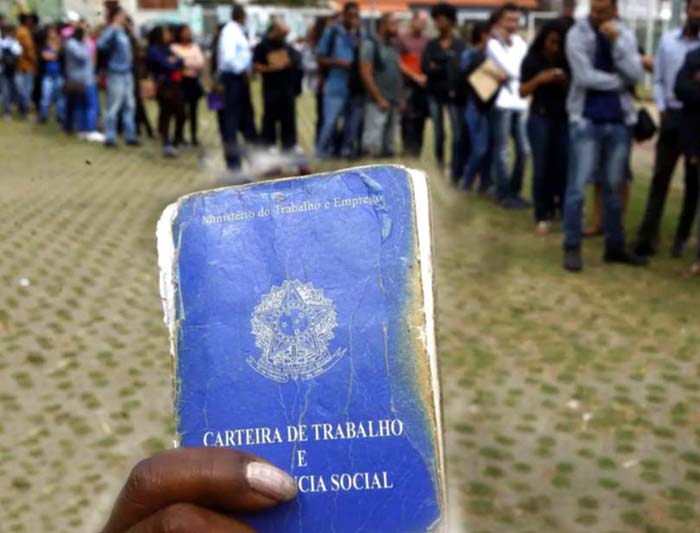RIO DE JANEIRO, BRAZIL – The monthly edition of the Covid-19 National Household Sample Survey (PNAD) estimated that the unoccupied population, which stood at 10.1 million at the start of the survey in May, has increased to 13.5 million in September, a record since official records began. There was a 4.3 percent increase in the month and 33.1 percent since May. The data were released on Friday, October 23rd, by the Brazilian Institute of Geography and Statistics (IBGE).
“There has been an increase in the unemployed population over the course of these months. This growth is a result of both the people who lost their jobs up to July and the people who are starting to emerge from social distancing and start to pressure the labor market again,” said Maria Lucia Vieira, the survey coordinator.
The survey estimated the population in the country with jobs at 82.9 million people in September, an increase of one percent over the preceding month and a contraction of 1.7 percent over May. “The occupied population stood at 84.4 million in May and declined until July, when it returned to positive fluctuations, reaching a contingent of 82.9 million in September. It is still below the figure we had in May, but it is now showing a slight upturn in the months of August and September,” said the researcher.

The labor force, the sum of occupied and unoccupied population, rose from 94.5 million in May to 96.4 million in September. The number of people outside the labor force dropped by 1.5 percent over August, reaching 74.1 million. The unemployment rate rose from 13.6 percent in August to 14 percent, the highest since the survey began.
In September, the percentage of households where a resident benefited from the aid to tackle the impact of the pandemic reached 43.6 percent. In August it stood at 43.9 percent. A total of 29.9 million were assisted in September, compared to 30.1 million in August. The average amount of the benefit received by the population was R$894 (US$179) per household.
“The percentage of households where a resident received the emergency aid remained stable over the past four months,” said Maria Lucia.
Among the types of assistance covered by the survey are the emergency aid, intended for casual workers, individual micro-entrepreneurs, self-employed and unemployed, and the federal government supplement through the Emergency Program for the Maintenance of Employment and Income.
According to the IBGE report the North (59.8 percent) and Northeast (58.8 percent) were the regions with the highest percentage of households benefiting from assistance. Among states, Amapá (68.4 percent) presented the highest proportion, followed by Maranhão (63.7 percent) and Pará (63.3 percent).
“The regions with more households with people receiving assistance are still the North and Northeast, where there are more people within the criteria to be assisted. This percentage remained stable in all the great regions,” said the researcher.
The number of people tested for Covid-19 reached 21.9 million in September, the equivalent to 10,4 percent of the country’s population. Of these, 22.1 percent, the equivalent of 4.8 million, tested positive. In August, 17.9 million had been tested and 3.9 million had been diagnosed positive for the disease.
“Between August and September, four million more people were tested and approximately one million more tested positive,” said Maria Lucia.
The highest rate of people tested for Covid-19 was found between the ages of 30 and 59 (14.3 percent), followed by the 20 to 29 age group (12.1 percent) and the 60+ age group (9.2 percent). Among the unschooled to incomplete elementary education, 5.5 percent were tested, and among those with complete higher education or graduate studies, it reached 21.5 percent.
According to IBGE, the rate of tests for diagnosing the disease is higher among the group with higher per capita household income, reaching 25.1 percent for people in the range of four or more minimum wages. During the same period, only 5.9 percent of people in the range of less than half a minimum wage were tested.
“Three types of tests are covered by the survey: the SWAB, a test in which the material is collected with a swab in the mouth and/or nose; the rapid test, with blood collected through a finger puncture; and blood taken from a vein in the arm. Of the 21.9 million people tested, 8.8 million took the SWAB test and, of these, 2.3 million were diagnosed positive,” says the IBGE.
The Federal District (22.2 percent) was the federation unit with the highest rate of tests performed, followed by Piauí (17 percent) and Goiás (16 percent). The lowest rates were registered in Pernambuco (6.8 percent), Acre (6.9 percent), and Minas Gerais (7.8 percent).
Source: Agência Brasil

